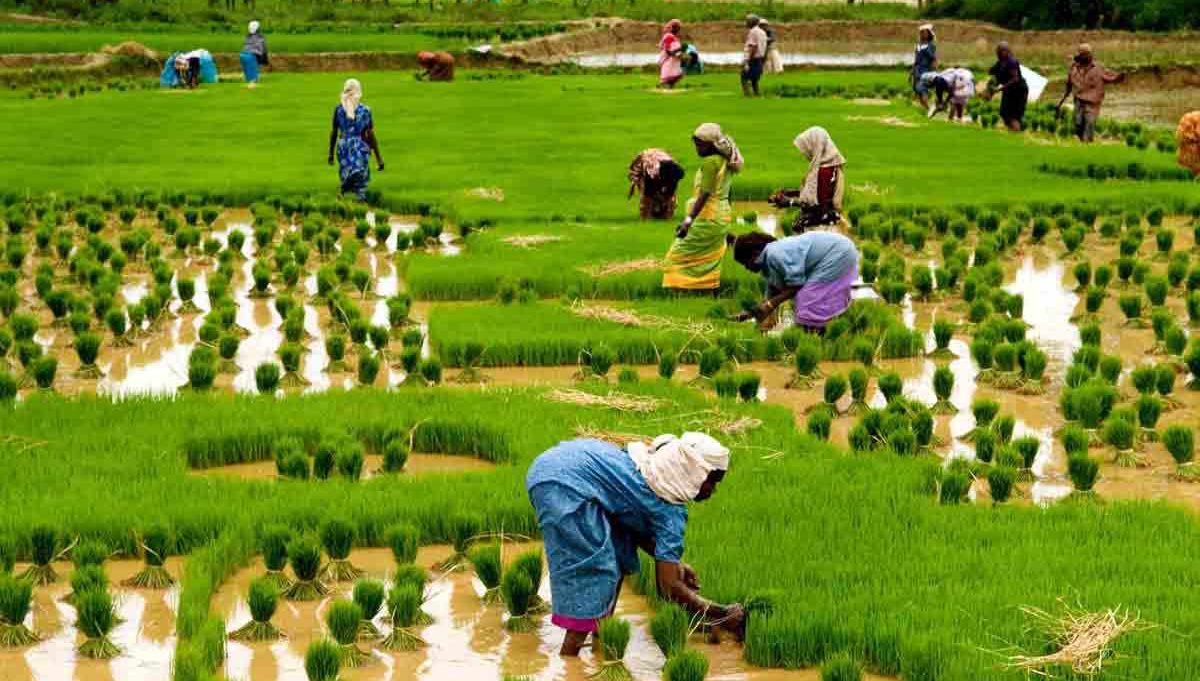Big Promises of Budget
- Growth at 11 percent
- Garbage-free Goa by 2020
- Beggar-free and Kerosenefree Goa
- Mandovi bridge completion during FY 2017-18
- Zuari Bridge to be commenced in 2019
- South Goa district hospital to be put in operation by 2018
- Agriculture growth at 6 percent
- Agriculture sector sustainable and double farmers’ income by 2022
- VRS scheme for lethargic government employees
- Time bound service delivery to citizens
- Special vigilance cell to act against corruption
- Regularization of houses on communidade and government land
- Inventory of government land and encroachments
- 24×7 water supply with 100 liter per capacity per day to rural areas and 150 per capacity per day to urban areas
- Sewerage connection to all households
- Additional grants to primary schools imparting education in Konkani and Marathi language
- Three solid waste management plants at Cacora, Bainguinim and Verna
- 15 percent VAT on petrol
- Hike in recurring fees for casinos
Chief Minister Manohar Parrikar last month presented the State Budget 2017-18 projecting a 11 percent growth and sought to ramp up spending on infrastructure. But he spared the common man from any additional levies except for a hike in petrol prices, which he said was a need of the hour with inflationary prices, and to generate revenue for the State exchequer. While placing forth a Rs 202 crore revenue surplus budget, Government is admitting that the amount may go up marginally with spending on welfare schemes and the recent introduction of the 7th Pay Commission for over one lakh employees. “I assure this house as well as the people of Goa that I will keep no stone unturned for the development of Goa and the welfare of the people of Goa,” was the opening remark of Parrikar’s budget speech tabled before the State legislative Assembly. The budget also saw a whopping 50 percent rise in the Budgetary allocation for infrastructural sectors – Public Works Department (PWD) and Goa State Infrastructure Development Corporation (GSIDC).
With a shrinking State economy and the revenue backbones – iron ore mining and tourism – failing to provide the expected income, Government is now completely banking on its share from the Centre to keep the pace going. A revamp of the State’s financial situation, while keeping the balance between spending on social welfare sector and development, is one of the biggest challenges that Parrikar faces today.
With the BJP-led coalition government working on a ‘Common Minimum Programme’ to be released in the second week of April, Parrikar restrained himself from making any ‘populastic’ announcement in the financial statement, which was largely focused on restructuring the State’s financial position. Parrikar who holds the finance portfolio presented the annual budget of Rs.16,021 crore with a revenue surplus of Rs.202.48 crore. The budget size has increased from Rs 14,694 crore in the 2016-17 financial year to Rs 16,270 crore in the new financial year. Goa’s per capita income stood at Rs 2,71,793, the highest among states. “I have not compromised on implementation of any welfare scheme or on the infrastructure while making present budget provisions, but still controlled the increase in revenue expenditure at bare minimum,” Parrikar said, while earmarking Rs 978 crore to the social sector and Rs 2482 crore for the infrastructural sector.
A close analysis of the Budget indicates that Parrikar has laid emphasis on his unfulfilled Budgetary promises made by him during his earlier tenure in 2012- 14 (during which he presented three Budgets) – be it time bound service to citizens, or completion of the Mandovi and Zuari bridges, or commencement of the South Goa district hospital or selfsustained agriculture sector or garbage free Goa or rehabilitation of slum areas – all promises that remained mere announcements on Budget documents. Beggar-free Goa, traffic management, voluntary retirement (VRS) to ‘lethargic’ government employees, revamp of education sector, ex-servicemen to man the mismanaged Goa medical college administration, proper mechanism to maintain the created infrastructure – these are some of the new initiatives promised by Government. But even today, the question that haunts the people of Goa is how Mr Chief Minister is going to accomplish these tasks – especially of revamping the economy, Garbage-free and Beggar-free Goa, VRS to its employees and making agriculture sector self-sustainable by doubling the farmers’ income. ‘Failing to plan is planning to fail’.
Government will draw a vision plan for each and every individual department with a road map to achieve this vision. While doing this Government would emphasize on ‘minimum government and maximum governance’ to provide services to the people of the State to the best of their satisfaction,” Parrikar assured his legislative members.
FINANCE:
After recording a negative growth for the FY 2013-14, the Gross State Domestic Product (GSDP) witnessed 9.64 percent growth in 2014-15. Government has now pegged growth at 11 percent for FY 2017-18. However, it has failed to outline the measures that would achieve the set target. “The increase in VAT on petrol was necessary as it would help in generating a revenue somewhere between Rs 70-80 crore. Rise in recurring fees of casinos will also help fetch revenue of around 80-90 crore. Also, I am expecting revenue from mining industry this year,” Parrikar said, without elaborating further on revenue collection. If one goes as per Parrikar’s statement, the budget may turn out to be a huge surplus as Goa is eyeing not less than Rs 2000 crore once the GST regime begins. Though it has not figured in the budget, Government hopes that Goa would accrue a minimum of Rs 1200 crore from the Goods and Services Tax once the bill passed by the Lok Sabha is through. “Our revenue would rise by 25 percent once the GST regime begins,” the Chief Minister said, explaining that Government at present collects almost Rs 1600 crore towards service tax and excise at the rate of 12 percent and could go upto Rs 2000 crore at the rate of 18 percent. Further, the Union Government has earmarked Rs 3224.61 crore as State share of Central Taxes and Grantin- Aid, accounting for nearly 22.40 percent of the net present budget. The rise is almost three-fold.
GARBAGE-FREE GOA by 2020 and BEGGAR-FREE GOA:
If one remembers, Parrikar during his earlier stint had announced to make Goa garbage-free by December 19, 2015. However, despite introduction of measures like cleaning of the national highways and a world-class solid waste treatment facility, the dream never came true. Even today, garbage is the biggest nuisance the coastal State is facing, with Government failing to come up with any concrete solutions.
As a first step towards garbage-free Goa, Parrikar announced a complete ban on plastic below 40 microns and said those violating this would be penalized with hefty fines. But the fact is that this rule already exists in the State, but unfortunately is not implemented in its full capacity. Under the Waste Management Rules, the use of plastic is banned in Goa but despite this one can see open use of plastic bags. This is something Parrikar needs to look into very seriously and take it as a challenge to weed out this practice. Secondly, claiming the success of the Saligao solid waste treatment plant, Government now proposes to set up three such plants at Cacora, Bainguinim and Verna industrial estates on Design-Build-Finance-Operate & Transfer (DBFOT) basis. Though a very good concept, Parrikar here is expected to face massive protest, as ‘everyone wants a solution to garbage but that solution should not commence from their backyard’. In Cacora, the villagers are already up in arms and so also in Bainguinim, where locals have stalled a decade-old garbage treatment project of the State. Convincing the people here is going to be a tough task for Parrikar. The people’s participation is of utmost importance to have a clean Goa of our dreams.
Moreover, these solid waste plants require 100 tons of garbage every day to treat. The question is from where so much garbage is going to come from. First and foremost, Government will have to streamline the garbage collection, segregation and transportation system at panchayat level. Only such an effective setup can help Government in achieving its dream of Garbage-free Goa by 2020.
Parrikar aims to make Goa the first State in the Country to be beggar-free. But can this be a reality? Practically speaking, no, as over the years Government has failed to take any action against the increasing number of beggars who are a nuisance to people, especially to tourists. The best example of authorities reluctant to act is when Panjim City Mayor Surendra Furtado undertook a drive to weed out beggars from the capital city. He wrote a letter to the North Goa Superintendent of Police asking him to take steps to eradicate beggars from the city, but a month has passed with no action in that direction. Setting up of a rehabilitation centre for the beggars is not going to work as 90 percent of these beggars work for ‘dedicated gangs’ who employ them on contract basis and provide daily wages, along with pick and drop service. Government will first have to get rid of these organized gangs.
SELF-SUSTAINED AGRICULTURE SECTOR by 2022
At a current 3 percent growth rate, Government aims to achieve 6 percent growth in the agriculture sector, thereby making Goa completely selfsustainable and non-dependent for food grains, milk, vegetables and all other agricultural products.
The announcement comes even as the primary sector including agriculture has been reporting a declining growth over the last two financial years. The sector recorded 3.64 per cent growth in 2014-15 as against a 16.57 per cent in 2013-14.
Though Government intends to make State self sufficient in agriculture products, it is a fact that even today the State is dependent on the neighbouring states to fulfill its needs for food grain, vegetable, fruits and other requirements. But at the same time, some traditional communities are seen cultivating vegetables, chillies and food grains in the State, but to a small scale. “Government intends to revolutionalise the agricultural sector with greater emphasis on horticulture crops such as coconut, areca nut, mango, cashew spices and also encourage floriculture and vegetable farming. This would give better yield and higher income per acre for the land owned by the agriculture farmer,” Parrikar said promising to double farmers’ income by 2022.
The total budgetary outlay for the agriculture sector is Rs 172 crore.
TIME BOUND SERVICE TO CITIZEN & VRS TO LETHARGIC GOVERNMENT EMPLOYEES:
It was in 2013 when the then BJP government introduced the Goa (Right of Citizens to Time-Bound Delivery of Public Services) Act 2013 ensuring time bound service to the citizens. But the Act remained only on paper, with citizens even today crying for quality and quick service. This is something that can make Parrikar sweat, as putting government employees on track is a challenging job.
Government employees, a vote bank of almost all the politicians, work as per their whims and fancies. You may find one in hundred giving his or her best to render good service to the citizen. With Parrikar’s return as Chief Minister many have started improving on their conduct, but acting against those who don’t meet standards is going to be a difficult task.
REVAMP OF EDUCATION SECTOR:
Education is one subject which is very close to Parrikar’s heart. Except for the controversial medium of instruction issue (MOI) which did not find place in the State Budget, Parrikar will leave no stone unturned to revamp the education sector. “Government proposes to revamp the entire Goan education system to align with the international benchmarks and bridge the academia-industry gap through formal collaboration between both,” Parrikar said. The proposals in the Budget – like Integrated Educational Complexes in and around Margao and Mapusa on similar lines of the IEC at Cujira, additional facilities such as swimming pool, badminton and basket ball courts, gymnasium, state library and modern buildings for schools – are goals that can be achieved. And with Parrikar in the chair, they could well become a reality.
- Team TNV





























